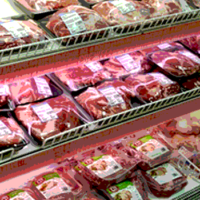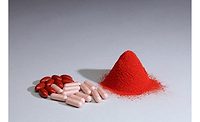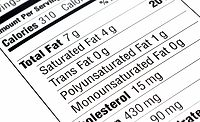Many consumers look at the label when making decisions about their food choices, and most often they are looking for clean-label foods to complement their healthier lifestyle. According to the 2016 “Food and Health” survey from the International Food Information Council,[1] 47 percent of consumers look at the ingredients list when making a purchasing decision.
When asked how they define a “healthy eating style,” 41 percent of respondents chose “limited or no artificial ingredients or preservatives,” and when asked to define “natural” food, 29 percent said “associated with having no preservatives or additives.”
These factors directly influence purchasing decisions. When shopping for food, more than one quarter (27%) of consumers say that health concerns influence their choice of food, and nearly as many (23%) indicated that they are more likely to buy food with a health claim on the package than food without.
Clean labeling is affecting nearly half of food processing operations, according to The Association for Packaging and Processing Technologies’ 2017 Trends in Food Operations Report.[2] As consumer shopping habits are increasingly affected by the perceived healthiness of foods, brands must do more to display the health benefits of their products. Advances in smart packing, visual graphics and even package recyclability can help draw in today’s health conscious buyers.
Thinking outside the Box
Along with the desire to know what is in their food products, consumers also have a desire, and many times a need, to know more about what they are consuming. The North America active and intelligent packaging market is estimated to grow from $6.35 billion in 2016 to $9.34 billion by the end of 2021. Leading the market is the United States, with almost 85 percent of the market share. Printed electronics and the cloud are opening up new ways for brands to connect and share information with shoppers. Technologies incorporated or embedded in the package can convey nutrition information, allergy information, expiration dates and more.
It’s in the Eye of the Beholder
As consumers demand cleaner food and more transparency from brands, companies must find ways to help their products stand out among the hundreds of other healthy options. In 2016 alone, 4,591 new products carrying a U.S. Department of Agriculture-approved “no additives or preservatives” label were introduced to the market. The number of new genetically modified organism-free products amounted to 3,732: 3,011 were organic; 6,552 were low-to-no allergen; 6,123 were gluten-free and 5,056 claimed an environmentally friendly package. Each of these categories has grown year-by-year since at least 2009.
The proliferation of products with health claims creates a challenge for food manufacturers. Brands can look to special features like matte varnishes, clear panels and eye-catching visuals to help their products stand out on the shelf.
Increasingly, brands are gravitating toward using photographic elements in their packaging. Whether it’s an actual picture of the food inside the package or a bottle of pomegranate juice with a photo of a pomegranate on the front, including photographs of fresh foods offers shoppers a sense of trust in the healthiness of their food. Consumers want greater transparency.
When calling out benefits on the package, brands should include not just the nutritional value of the food but the environmentally friendly assets of the package itself. Innovations in product labeling show higher levels of recyclability, including de-steaming technology that helps separate labels from containers in the recycling process.
Reduce, Reuse, Recycle
According to a global CSR study by Cone Communications,[3] 91 percent of global consumers expect companies to operate responsibly and make efforts to address environmental concerns. The study also found that 84 percent of shoppers seek out environmentally responsible products whenever possible, and 71 percent would pay more for a sustainable product.
Packaging companies are providing more solutions that lessen a brand’s environmental impact in the factory and in the store.
Food and beverage packaging professionals are leading the clean label and sustainable packaging movement. As more companies make clean label claims, innovations in the packaging industry make it easier than ever for brands to call attention to the health and environmental benefits of their products.
Sean Riley is senior director of media and industry communications at The Association for Packaging and Processing Technologies.
References
1. www.foodinsight.org/sites/default/files/2016-Food-and-Health-Survey-Report_FINAL1.pdf.
2. www.pmmi.org/sites/default/files/Infographic_Food-Processing.pdf.
3. www.conecomm.com/research-blog/2017-csr-study.
Embracing the Clean Label Movement




